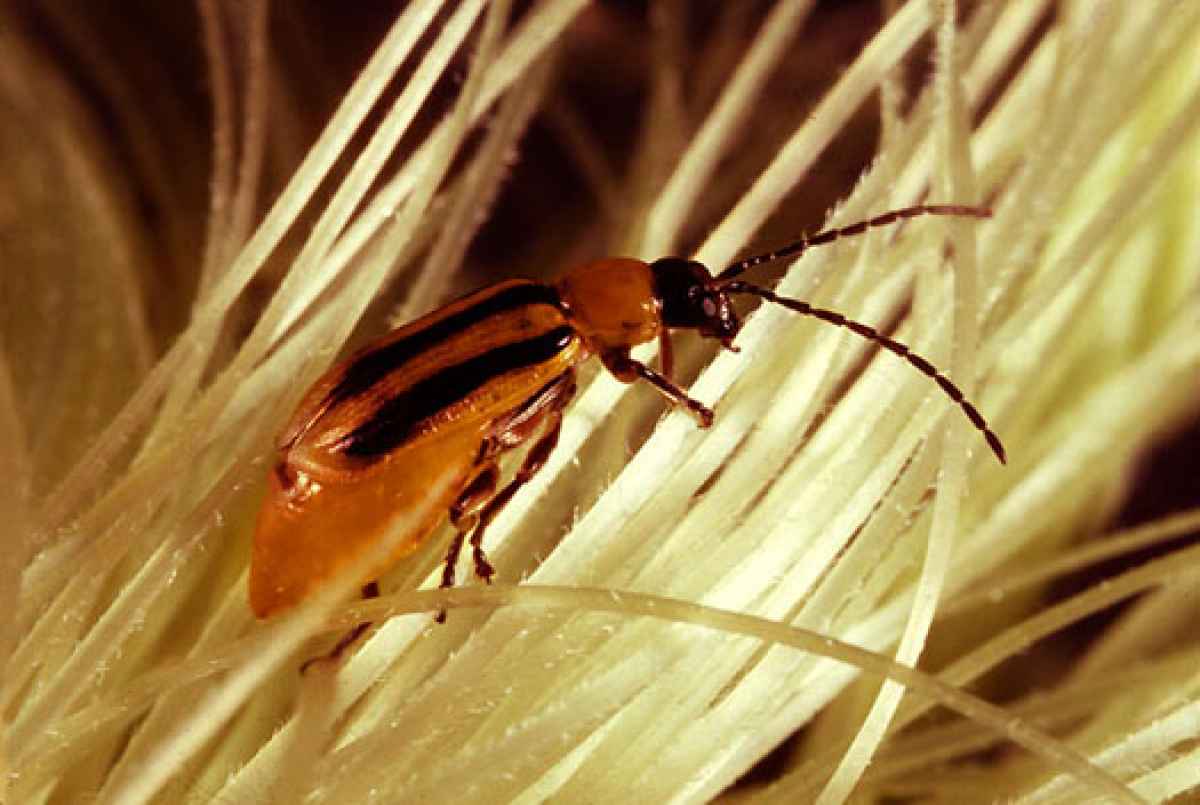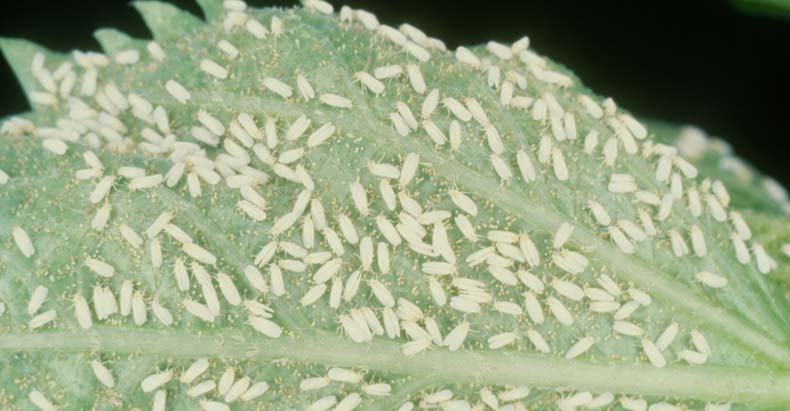
MONSANTO CROPS DECIMATED BY PESTS - MEANWHILE, NEARBY NON GMO CROPS THRIVING
Justin Gardner

Monsanto and the biotech industry are relentless in their efforts to push (GM) genetically modified crops on the world, under false pretenses that their products increase yields and reduce the use of chemicals. These claims are not supported by the facts.
The biotech industry has already gained control of the U.S. soybean, corn and cotton market by infiltrating regulatory agencies, providing falsified data, using their patents on life to drive non-GMO farmers out of business, buying off lawmakers and spending millions on propaganda.
Monsanto has also secured a foothold in India, where its patented Bt cotton has come to dominate agricultural fields. This GM crop, which releases a bacterial toxin meant to control pests such as bollworm, was sold as a way to reduce pesticide use. However, as with so many other GM crops, the reality turns out to be opposite.
But over the years, whiteflies have regularly attacked cotton plants only to be controlled by intensive spraying of chemical pesticides. But this year, despite a new pesticide being introduced and subsidized by the state government, the whitefly attack spun out of control.
As a result of the whiteflies’ decimating Punjab’s GM cotton crops this year, at least 15 farmers committed suicide. And yes, it was Monsanto crops that were decimated.
Curiously, the crop in the adjoining field, and another in the vicinity, showed far less whitefly infestation. In fact, in the adjoining field, farmer Yadvender Singh had sprayed no chemical pesticides at all. Instead, he had used biofertilisers and other non-chemical formulations. Yadvender’s field is expected to yield 800 kg of cotton per acre compared to 300 kg that Manjeet would hope to harvest. In the other plot, a non-Bt variety of cotton too was far less affected by whitefly.
Yadvender’s field, where chemical pesticides were not used, showed spider webs on the plants. These are natural predators of whitefly. In fields where pesticide is heavily sprayed, these are decimated leaving the whitefly to flourish.
 Swarms of whiteflies on BT cotton.
Swarms of whiteflies on BT cotton.
Here we have direct observations that GM crops suffer more pest damage and greater pesticide use, and have led to multiple suicides. On the contrary, non-GM farmers promote ecological life instead of destroying it, thereby enjoying bountiful yields.
Farmer suicide in India has reached epidemic proportions, experiencing rates as high as one farmer every 30 minutes. Dr. Vandana Shiva argues that the fact that Monsanto controls 95% of the cotton seed in the country, beginning its efforts in 1988, is a significant factor in this situation.
Five things changed with Monsanto’s entry: First, Indian companies were locked into joint-ventures and licensing arrangements, and concentration over the seed sector increased. Second, seed which had been the farmers’ common resource became the “intellectual property” of Monsanto, for which it started collecting royalties, thus raising the costs of seed. Third, open pollinated cotton seeds were displaced by hybrids, including GMO hybrids. A renewable resource became a non-renewable, patented commodity. Fourth, cotton which had earlier been grown as a mixture with food crops now had to be grown as a monoculture, with higher vulnerability to pests, disease, drought and crop failure. Fifth, Monsanto started to subvert India’s regulatory processes and, in fact, started to use public resources to push its non-renewable hybrids and GMOs through so-called public-private partnerships (PPP).
Monsanto’s seed monopolies, the destruction of alternatives, the collection of superprofits in the form of royalties, and the increasing vulnerability of monocultures has created a context for debt, suicides and agrarian distress which is driving the farmers’ suicide epidemic in India. This systemic control has been intensified with Bt cotton. That is why most suicides are in the cotton belt.
Highlighting the nature of this tragedy is the fact that many of them commit suicide by drinking pesticide. Documentarian Alakananda Nag has interviewed dozens or relatives of farmers who have taken their lives, finding that the onslaught of GMO has played a part in the epidemic.
Some in the agricultural field recognize the downward spiral of the GMO-chemical approach to agriculture and are seeking a different course.
“It is possible that whitefly has developed resistance to the commonly used pesticides,” says Uday B Philar, who heads a Pune-based biofertiliser company, Sequoia Biosciences. Philar spent over three decades in the pesticide industry before deciding to set out on his own, formulating non-chemical, eco-friendly products.
This is similar to the story of herbicide-resistant GM crops which are responsible for the emergence of “superweeds” that are no longer affected by herbicides. The biotech industry’s only response is to develop other GM crops resistant to more toxic herbicides and pesticides, which will only lead to weeds becoming resistant to these as well. But this cycle of more patented GM crops and more pesticide use is what provides biotech corporations so much wealth and power.
Agroecology is proving to be a successful alternative to the destructive ways of GMO industrial agriculture. This method of agriculture has produced record yields with no pesticides or GM crops, using scientific information, local knowledge and ecologically sound practices.
Justin Gardner writes for TheFreeThoughtProject.com
http://www.naturalblaze.com/2015/11/monsanto-crops-decimated-by-pests-meanwhile-nearby-non-gmo-crops-thriving.html?utm_source=Natural+Blaze+Subscribers&utm_medium=email&utm_campaign=8408ae9b29-RSS_EMAIL_CAMPAIGN&utm_term=0_b73c66b129-8408ae9b29-387887777
